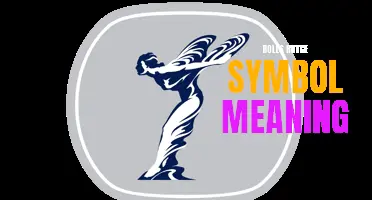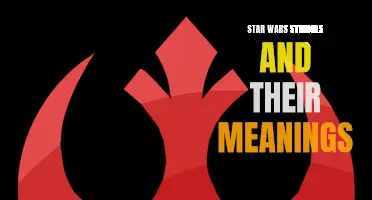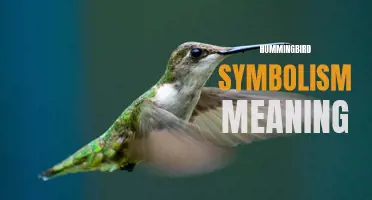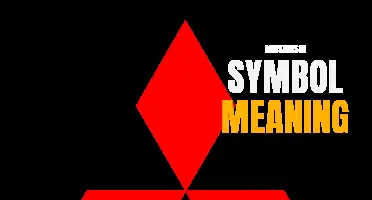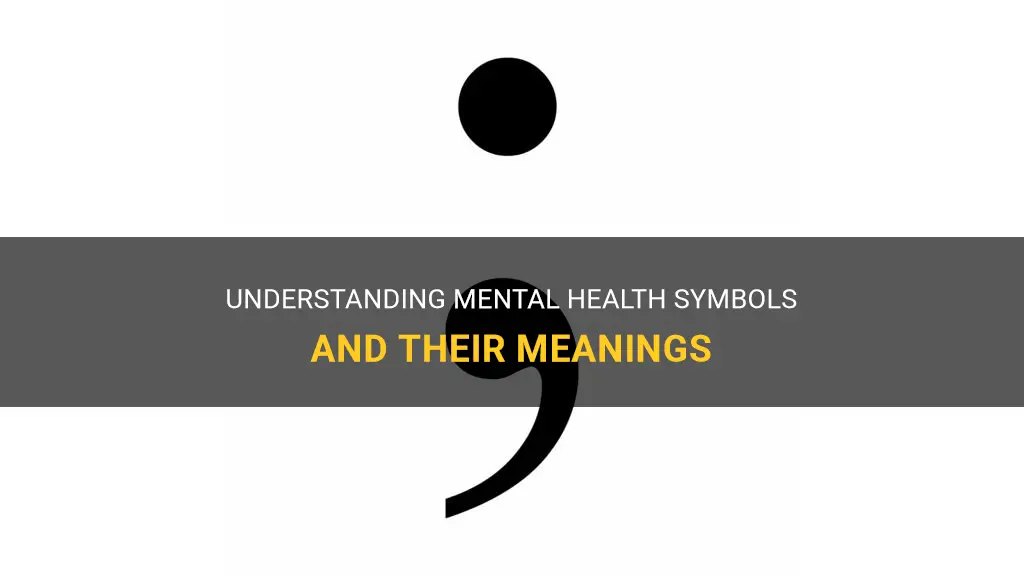
Mental health is a topic that is slowly gaining more recognition and understanding in today's society. As conversations around mental health become more open and normalized, symbols and meanings related to mental health are also emerging as a way to raise awareness and express support for those struggling with mental illness. From ribbons to colored semicolons, these symbols have both personal and universal significance, serving as powerful reminders of the importance of mental well-being and the ongoing battle against stigma. Join me as we delve into the world of mental health symbols and explore their rich and compelling meanings.
What You'll Learn
- What are some common symbols used to represent mental health in art or design?
- Can you explain the meanings behind common mental health symbols such as the semicolon or the green ribbon?
- Are there any cultural or historical symbols that have been associated with mental health?
- How can the use of symbols help reduce stigma surrounding mental health?
- Are there any symbols or colors that are specifically associated with different mental health conditions or disorders?

What are some common symbols used to represent mental health in art or design?
Art and design have long been used as platforms for depicting and representing various aspects of human experience, including mental health. Symbols, in particular, are commonly used to communicate complex ideas and emotions in a concise and impactful way. In the context of mental health, symbols can provide a visual shorthand for concepts such as well-being, self-care, and the challenges faced by individuals with mental health conditions.
One of the most recognizable symbols used to represent mental health is the semicolon (;). Originally popularized by the Project Semicolon movement, this symbol represents the idea that a person's story is not over, even if they have faced struggles such as depression, self-harm, or suicidal thoughts. The semicolon symbolizes solidarity and resilience, reminding individuals that their mental health journey is ongoing and that they have the strength to keep moving forward.
Another symbol commonly associated with mental health is the green ribbon. The green ribbon is a global symbol used to raise awareness about mental health conditions, particularly during mental health awareness campaigns and events. The color green is often used as it represents growth, renewal, and hope. Wearing or displaying a green ribbon can serve as a way to show support for those struggling with their mental health and to reduce the stigma associated with mental health conditions.
The image of a broken or cracked heart is also a symbol often used in art and design to represent mental health challenges. This symbol visually portrays the emotional pain and struggles experienced by individuals with mental health conditions, particularly those related to mood disorders or heartbreak. By depicting a heart in this way, artists and designers can evoke empathy and understanding in their audience, encouraging conversation about the often invisible and intangible nature of mental health issues.
Similarly, the use of puzzle pieces has become a widely recognized symbol for mental health. Inspired by the autism awareness movement, puzzle pieces are used to represent the fragmented and intricate nature of mental health. The puzzle piece symbolizes the complexity of mental health conditions and the need for a holistic approach to understanding and supporting individuals with these conditions. This symbol is commonly used in campaigns, artwork, and design to promote acceptance, inclusivity, and understanding of mental health.
In addition to these symbols, artists and designers often incorporate elements such as butterflies, birds in flight, or blooming flowers to represent mental well-being, growth, and transformation. These symbols evoke a sense of hope, renewal, and the possibility of positive change, which are essential in the recovery journey for many individuals with mental health conditions.
Overall, symbols play a crucial role in effectively conveying complex ideas and emotions related to mental health in art and design. Whether it's the semicolon, green ribbon, broken heart, puzzle pieces, or other representations of growth and hope, these symbols provide a visual language that can foster understanding, support, and empathy for those navigating their mental health journeys.
Unlocking the Symbolic Meaning of Wings: Exploring Their Spiritual and Cultural Significance
You may want to see also

Can you explain the meanings behind common mental health symbols such as the semicolon or the green ribbon?
Mental health symbols have gained significant recognition over the past decade as a way to raise awareness and reduce the stigma around mental health issues. These symbols, such as the semicolon and the green ribbon, carry powerful meanings and serve as constant reminders of the importance of mental health. In this article, we will explore the meanings behind these common mental health symbols.
The Semicolon:
The semicolon is a punctuation mark that holds a special significance in the mental health community. It represents a message of hope and continuation. The idea behind the semicolon project is that just like in writing, where a semicolon indicates a pause in a sentence that is not yet finished, anyone experiencing mental health struggles should pause and continue rather than ending their story. It is a reminder that despite the challenges one may face, there is still hope and the possibility of a brighter future.
The Green Ribbon:
The green ribbon is another recognizable symbol in the mental health advocacy realm. It is often used to raise awareness about mental health issues such as depression, anxiety, and other mood disorders. The green color represents renewal, life, and rebirth. By wearing or displaying a green ribbon, individuals show their support for mental health awareness and their commitment to making a positive change.
The Puzzle Piece:
The puzzle piece symbol is commonly associated with autism spectrum disorder (ASD) and represents the complexity of the condition. Autism is often described as a puzzle due to its various manifestations and the ongoing research to better understand it. The symbol emphasizes the need for awareness, acceptance, and understanding for individuals with autism and their families.
The Hope or Awareness Ribbon:
The ribbon is a universal symbol for raising awareness and support for various causes, including mental health. The color of the ribbon can vary depending on the specific mental health issue being highlighted. For example, a purple ribbon is often associated with suicide prevention, while an orange ribbon represents attention deficit hyperactivity disorder (ADHD). These ribbons serve as a visual way to show support and solidarity with those affected by mental health challenges.
The Lightbulb:
The lightbulb is often used to represent ideas and innovation. In the context of mental health, it symbolizes knowledge, understanding, and inspiration. It signifies the need for open conversations, education, and breaking down the barriers surrounding mental health. The lightbulb serves as a reminder to shine a light on mental health issues and to foster a more supportive and understanding society.
In conclusion, mental health symbols play an essential role in raising awareness, promoting understanding, and reducing stigma. The semicolon, green ribbon, puzzle piece, awareness ribbons, and lightbulb all carry significant meanings associated with mental health. By understanding and embracing these symbols, we can create a more inclusive and supportive environment for those affected by mental health challenges.
Deciphering the Meaning Behind Satanic Symbols: Unveiling the Veil of Darkness
You may want to see also

Are there any cultural or historical symbols that have been associated with mental health?
Cultural and historical symbols can often hold deep significance and meaning, shedding light on various aspects of human life and experience. When it comes to mental health, there are several symbols that have emerged over time, representing different aspects of mental well-being, understanding, and support.
One widely recognized symbol associated with mental health is the semicolon. Originating from the world of literature, the semicolon has been adopted as a symbol by the mental health community to represent hope and resilience. The message behind this symbol is that, like a semicolon in a sentence, a person's life is not over when they face challenges such as mental illness or thoughts of suicide. Instead, it is a pause, a moment to regroup, and continue the sentence of their life.
Another symbol associated with mental health is the green ribbon. The green ribbon has been used to raise awareness and show support for mental health issues. It is often worn or displayed to signify solidarity with individuals and their families who are affected by mental health conditions. This symbol serves as a reminder to prioritize mental health and reduce the stigma surrounding it.
One historical symbol of mental health is the Caduceus, a staff with two entwined snakes topped by wings. While widely associated with medicine, it is also linked to mental health, as the snakes are thought to represent the duality of the brain's hemispheres and the healing process. The Caduceus symbolizes the importance of understanding and treating mental health concerns as medical issues, deserving of care, compassion, and attention.
In various cultures, the lotus flower symbolizes mental health and spiritual growth. The lotus is often associated with purity, enlightenment, and resilience. It is a reminder that beauty and growth can arise from adversity, signifying the possibility of overcoming mental health challenges and finding inner peace and balance.
The Yin and Yang symbol from Chinese philosophy also offer insights into mental health. Representing the balance between opposing forces, Yin and Yang teach us the importance of finding harmony within ourselves. Mental well-being is achieved when there is a balance between light and darkness, calmness and chaos, and acceptance of all aspects of our inner selves.
Symbols have a powerful way of conveying messages and representing complex ideas. These cultural and historical symbols associated with mental health serve as reminders of resilience, hope, unity, and the importance of holistic well-being. They not only help raise awareness but also foster a sense of solidarity and support for individuals facing mental health challenges.
Spider Symbolic Meaning: Unraveling the Mysteries of the Eight-Legged Creature
You may want to see also

How can the use of symbols help reduce stigma surrounding mental health?
Symbols have a powerful impact on society and can be a way to promote understanding and empathy. This is particularly important when it comes to addressing and reducing the stigma surrounding mental health. By using symbols, we can create visual representations that challenge stereotypes, educate others, and promote a more inclusive and supportive environment for those with mental health conditions.
One way symbols can help reduce stigma is by promoting awareness and understanding. For example, the green ribbon is a well-known symbol for mental health awareness. By wearing or displaying the green ribbon, individuals show their support for those struggling with mental health issues. This symbol not only sparks conversations about mental health but also helps to break down the barriers and stigma associated with these conditions.
Symbols can also help challenge stereotypes and promote inclusivity. Take, for instance, the "End the Stigma" symbol, which features a green mental health awareness ribbon combined with the "equal" sign. This symbol emphasizes the importance of treating individuals with mental health issues as equals and promotes a society that provides equal opportunities and support to everyone, regardless of their mental health status.
In addition to raising awareness and challenging stereotypes, symbols can also serve as a reminder for individuals to prioritize their mental well-being. The semicolon (;) is a powerful symbol that represents hope and solidarity for those struggling with mental health issues, particularly in relation to suicide prevention. The semicolon symbolizes that a person's story is not over and encourages individuals to keep going. By using this symbol in artwork, literature, and even on everyday objects like jewelry, it serves as a constant reminder to individuals that they are not alone and that there is hope and support available.
Symbols also have the power to create a safe space for individuals to express themselves and seek help. For example, the rainbow-colored "Safe Space" symbol is often used to indicate a judgment-free environment where individuals can openly discuss their mental health challenges without fear of negative repercussions. By incorporating this symbol in various settings, such as therapy offices, schools, and workplaces, it helps to create an atmosphere of support and acceptance, reducing the fear of stigma and encouraging individuals to seek the help they need.
In conclusion, the use of symbols is a powerful tool in reducing stigma surrounding mental health. These symbols promote awareness, challenge stereotypes, encourage open dialogue, and create a safe space for individuals to express themselves. By incorporating symbols into our daily lives, we can help normalize conversations about mental health, increase empathy and understanding, and ultimately work towards a society that supports and embraces individuals with mental health conditions.
Exploring the Intricate Meanings Behind Methodist Symbols
You may want to see also

Are there any symbols or colors that are specifically associated with different mental health conditions or disorders?
Symbols and colors have long been used to represent various concepts and ideas, including different mental health conditions and disorders. While there are no universal symbols or colors associated with specific mental health conditions, there are some that have become commonly recognized and used by various organizations and communities to raise awareness and show support.
One example is the semicolon symbol, which has been widely embraced as a representation of mental health awareness. The semicolon symbolizes that a person's story is not over, despite struggles with mental health and the difficulties they may have faced. It serves as a reminder of hope, resilience, and the opportunity for a new beginning.
Another symbol associated with mental health is the green ribbon. The green ribbon was adopted by the National Alliance on Mental Illness (NAMI) in the United States as a way to raise awareness and show support for individuals living with mental health conditions. Green is often associated with growth and renewal, symbolizing the hope for recovery and a better future.
Colors have also been used to represent specific mental health conditions, although these associations are not as widely recognized. For instance, blue is sometimes associated with depression, as it can be seen as a symbol of sadness and melancholy. Similarly, purple has been used to represent bipolar disorder, as it combines the colors blue and red, symbolizing the extremes of mood swings experienced by individuals with this condition.
It is important to note that these associations are not universally recognized or accepted. Mental health conditions are complex and vary greatly from person to person. Symbolism and colors can have different meanings and interpretations depending on cultural and personal contexts. The most important aspect of using symbols and colors in relation to mental health is to promote understanding, compassion, and support for those affected by mental health conditions.
Overall, while there are no definitive symbols or colors associated with specific mental health conditions, certain symbols such as the semicolon and the green ribbon, as well as colors like blue and purple, have become commonly recognized in relation to mental health awareness. However, it is crucial to remember that mental health is a deeply personal and individual experience, and the most significant support comes from understanding and empathy.
The Hidden Symbolic Meaning Behind Triangles Revealed
You may want to see also
Frequently asked questions
The semicolon tattoo is often used as a symbol for mental health as it represents hope and continuation. In grammar, a semicolon is used to connect two related but independent thoughts. Similarly, in mental health, the semicolon symbolizes the choice to continue one's life journey, even in the face of difficulties or struggles. It serves as a reminder to individuals that their story is not over and that there is always hope for a better future.
The green ribbon is commonly associated with mental health awareness, particularly for conditions such as depression, bipolar disorder, and anxiety. It is used to promote conversations and reduce stigma surrounding mental health issues. Wearing a green ribbon or displaying it in various forms, such as pins or ribbons, shows support for those who may be struggling and encourages open discussions about mental health.
The puzzle piece is often used to symbolize autism awareness, which is a neurodevelopmental disorder that can significantly impact an individual's mental health. The puzzle piece represents the complexity and uniqueness of autism spectrum disorders, highlighting the need for understanding and acceptance. It is a symbol that reminds society to recognize the diversity and value of individuals with autism and to support their mental well-being.
The blue butterfly is used as a symbol for mental health due to its association with transformation and rebirth. Butterflies undergo a remarkable metamorphosis, starting as caterpillars before transforming into beautiful creatures. This process mirrors the journey of individuals with mental health challenges, as they too may undergo periods of struggle and growth. The blue butterfly represents resilience, hope, and the potential for positive change in mental health.
Ribbon colors for mental health awareness can vary depending on the specific condition or cause being represented. For example, the red ribbon is commonly associated with addiction and substance abuse awareness, while the purple ribbon represents general mental health awareness. Each color carries its own significance and aims to raise awareness, promote understanding, and support individuals affected by different mental health issues. The variety of ribbon colors serves to highlight the diverse range of conditions, experiences, and needs within the realm of mental health.



